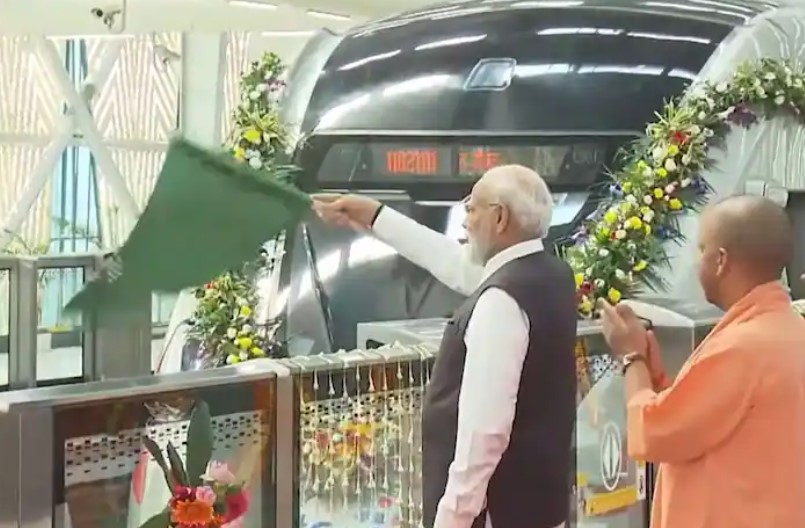Prime Minister Narendra Modi inaugurated the first leg of India’s first mass rapid transit system dedicated to regional connectivity on October 20.
The Regional Rapid Transit System (RRTS) trains on the first section, capable of reaching speeds of up to 180 km/h, will eventually reduce the journey time between Delhi and Meerut to less than an hour.
The RRTS network connects various locations in the NCR via fast commuter trains. The proposal was re-examined in 2006 with the extension of the Delhi Metro lines to some NCR towns such as Gurgaon, Noida, and Ghaziabad. With semi-high-speed rail connectivity at its core, the RRTS is an integrated mass transit network that aims to ensure “balanced and sustainable urban development” through better connectivity and access across the NCR.
Named as ‘Namo Bharat’ on the lines of ‘Vande Bharat’
This high-speed train has been named ‘Namo Bharat’ on the lines of ‘Vande Bharat’. There are five phases to this project on the Delhi-Meerut route. The trial run of this train was done before its inauguration. It achieved a speed figure of more than 152 km per hour.
Service will start for the general public on October 21
This high-speed rail service will start tomorrow, after the inauguration. The National Capital Region Transport Corporation (NCRTC) has been formed to operate the Rapid Rail. NCRTC is a joint company of the Central Government and the states of Delhi, Haryana, Rajasthan, and Uttar Pradesh. Work on this project started in June 2019. The deadline for the completion of the remaining phases of the project is set for June 2025.
How is the RRTS different from existing metro or railway systems?
When compared with metros, the RRTS network is faster. It will cater to commuters who want to travel relatively longer distances across the NCR in a short time.
Compared with the Indian Railways, though the RRTS train will cover relatively smaller distances, it will do so at a higher frequency and provide relatively more comfort than the average railway coach.
RRTS model on systems such as the RER in Paris, Regional Express trains in Germany and Austria, and SEPTA Regional Rail in the United States, among others.
How fast can RRTS trains travel?
RRTS trains will travel significantly faster than metro trains. These will operate at a speed of 160 km/h but are designed to be able to run at speeds up to 180 km/hour. Delhi Metro trains can operate at 100 km/hour to 120 km/hour, at the most, depending on the line. The Delhi Metro Rail Corporation’s fastest line, the Airport Express Line, for example, operates at a speed of 120 km/hour.
What is the objective behind the RRTS project?
The RRTS aims to “unlock the entire potential” of the NCR in a variety of ways, in addition to improving multi-modal connectivity at the NCR’s existing transportation hubs. One of the most important goals of the project is to encourage commuters to use public transportation, which will help to relieve congestion on its roads and highways, as well as existing metro and railway networks.
Shorter travel times are expected to boost the region’s overall economic productivity and allow for more economic activity to sprout up in and around suburban areas across the states of Uttar Pradesh, Rajasthan, and Haryana.
India
October 20, 2023 3:32 PM IST
Railways | rapid rail | vande bharat | namo bharat | Delhi Metro
PM Modi flags off Delhi-Ghaziabad-Meerut rapid rail
Author: DD India














